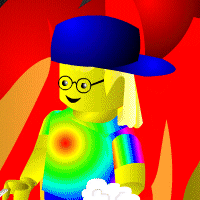 My image of Taliesin West
My image of Taliesin West
(from Wikimedia Commons)
Previously, I have written about how Encyclopedia Britannica introduced a free access scheme for bloggers. Nifty. But this flows both ways. EB is also moving to make use of resources available to it.
Point in case, the image at right.
As I am sure other people do, I periodically search for my own name using Google's search capabilities. Well, the other day, on the second page of the search (may not still return results) I found this link ... Turns out that EB chose to use my image to illustrate their article on Taliesin West! (Taliesin West was architect Frank Lloyd Wright's winter home and school in the desert in Scottsdale, Arizona, USA from 1937 until his death in 1959.)
So now I'm rich, right? Well no. That image, as you can see, is freely available on Commons, for anyone to use, as long as the license (in this case the GFDL 1.2) is honored. Which it is.
So am I upset? Nope! I'm delighted. This is how it's supposed to work. Free images are made free so that people can USE them. EB has properly atttributed the image and thus is free to use it as they see fit.
Maybe it's a bit ironic that EB is using a free image FROM a WMF site to illustrate an article which is supposedly better than the same article on Wikipedia. (which by the way, currently uses someone else's version of basically the same composition)... and, better or not, clearly is in competition.
But it's nifty! Got any other examples? I wonder who else has been honored this way?
By the way, here are both articles, you decide which is better:
Monday, August 11, 2008
Now I can retire...
Subscribe to:
Post Comments (Atom)




3 comments:
Wow, that is really cool Nice find, and congratulations, Lar. :)
Woot copyleft!
You forgot one of the personal benefits of donating images under a free or PD license, Lar: in effect, the donator establishes how a given item will be mentally pictured by countless millions of people.
To understand what I mean, try the following experiment. Think about a famous landmark, the skyline of a famous city, a notable structure: undoubtedly the mental image you called up was based on a photo you saw long ago, either the first one you saw of the object, or the most common.
Due to the ease of reuse that an image in the PD or having a free license possesses, they will be reused far more often than one from a proprietary source -- which often not only requires payment, but always is subject to the hassles of negotiating a contract.
Since you asked for an example, mine is the image of the Codex Sinaiticus, one of the earliest complete copies of the Bible: if you look at any language version of Wikipedia, the chances are good that it is the image I uploaded 3 years ago, scanned one afternoon from my great-grandmother's Bible.
Sometimes I like to marvel at how one otherwise anonymous person has come to have this powerful effect on the thinking of millions of people.
Geoff
Wikipedia vs Britannica:
Britannica FAIL (4:3 image)
Wikipedia WIN! (16:9 [or close to] image)
Post a Comment